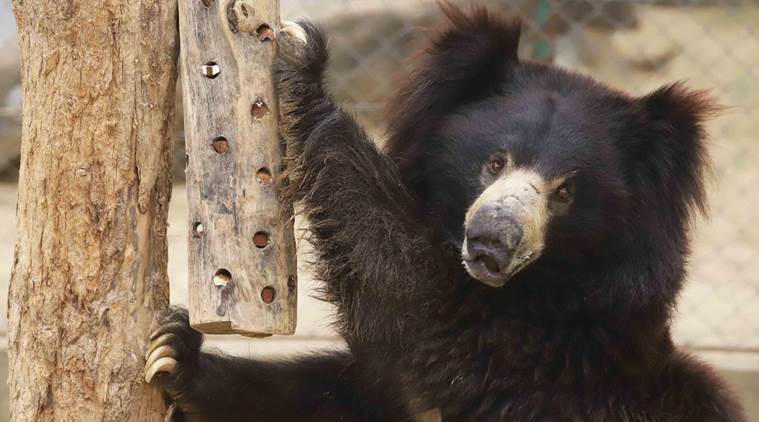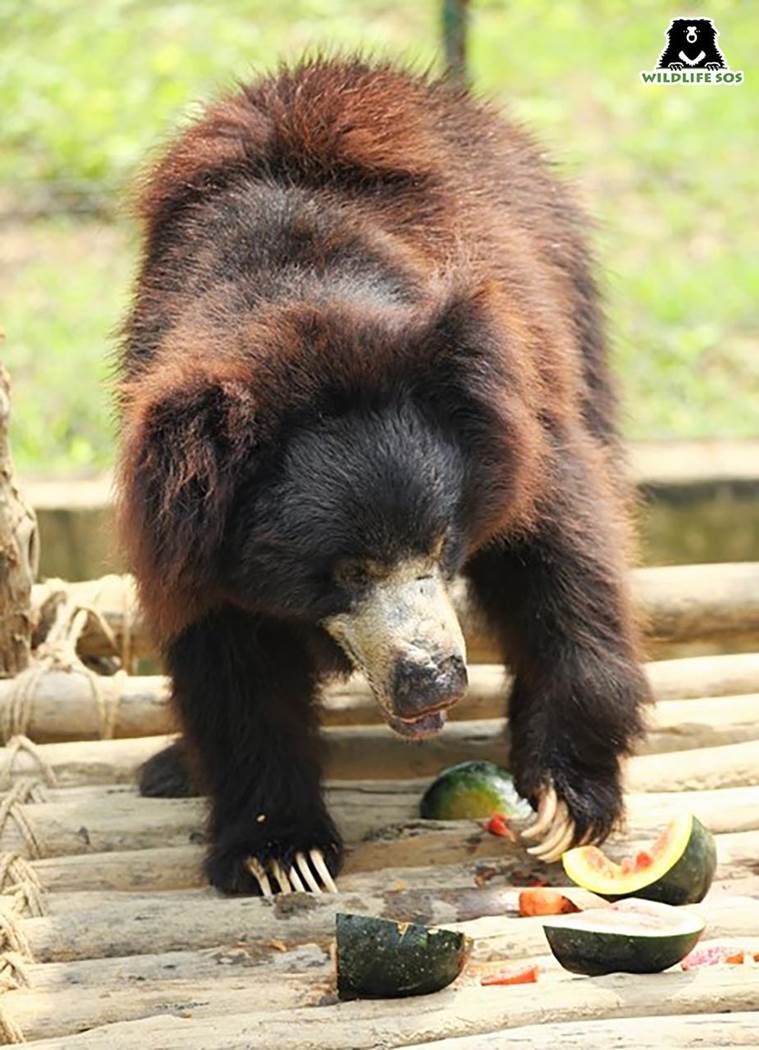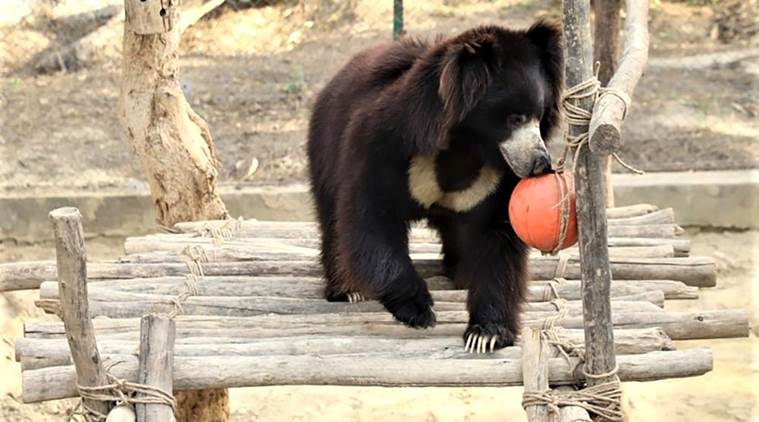 The sloth bear Rangeela is celebrating his second year of freedom today. (Photo: Wildlife SOS)
The sloth bear Rangeela is celebrating his second year of freedom today. (Photo: Wildlife SOS)
In December 2017, a then 19-year-old sloth bear named Rangila was dramatically rescued by Nepalese enforcement authorities, who intercepted a group of wildlife traffickers attempting to smuggle him across the India-Nepal border.
Today, the sloth bear is celebrating his second year of freedom after he was brought back to India to spend the rest of his days with others of his kind at the Wildlife SOS Agra Bear Rescue Facility.
 In December 2017, a then 19-year-old sloth bear named Rangila was dramatically rescued by Nepalese enforcement authorities. (Photo: Wildlife SOS)
In December 2017, a then 19-year-old sloth bear named Rangila was dramatically rescued by Nepalese enforcement authorities. (Photo: Wildlife SOS)
Rangila is one among hundreds of sloth bears who are captured from the wild and trained to dance for an audience from a young age. Two wildlife conservation NGOs — Wildlife SOS and the Jane Goodall Institute — were able to save Rangila from a life of captivity by facilitating his repatriation to India in 2018.
“Rangila was weak and undernourished when he first arrived at the centre,” Dr S Ilayaraja, Wildlife SOS Deputy Director, Veterinary Services said in a statement. “It took months of specialised care and treatment to restore his strength. However, Rangila still exhibits signs of psychological stress and trauma that will take much longer to heal.”
After Rangila and another sloth bear named Sridevi were rescued by Nepalese border authorities over two years ago, they were taken to Kathmandu Zoo for temporary housing. However, within weeks of being rescued, Sridevi passed away.
 Rangeela was weak and undernourished when he first arrived at the centre. (Photo: Wildlife SOS)
Rangeela was weak and undernourished when he first arrived at the centre. (Photo: Wildlife SOS)
On July 11, 2018, Rangila embarked on an arduous 30-hour journey to India, where he was immediately brought to the Agra Bear Rescue Facility, run jointly by Wildlife SOS and the Uttar Pradesh Forest Department. With nearly 200 bears, the facility is the world’s largest rehabilitation centre for sloth bears — a vulnerable species, targeted by poachers across the country.
“The sloth bear population in India depicts a declining trend. Despite continuous efforts, cross border trafficking of ‘Dancing Bears’ and demand for body parts for use in Traditional Chinese medicine, bear paw soup and bear bile still exists,” said Kartick Satyanarayan, CEO & Co-founder of Wildlife SOS.
“Poaching, habitat fragmentation and human wildlife conflict is a very serious threat to the sloth bears,” he added.